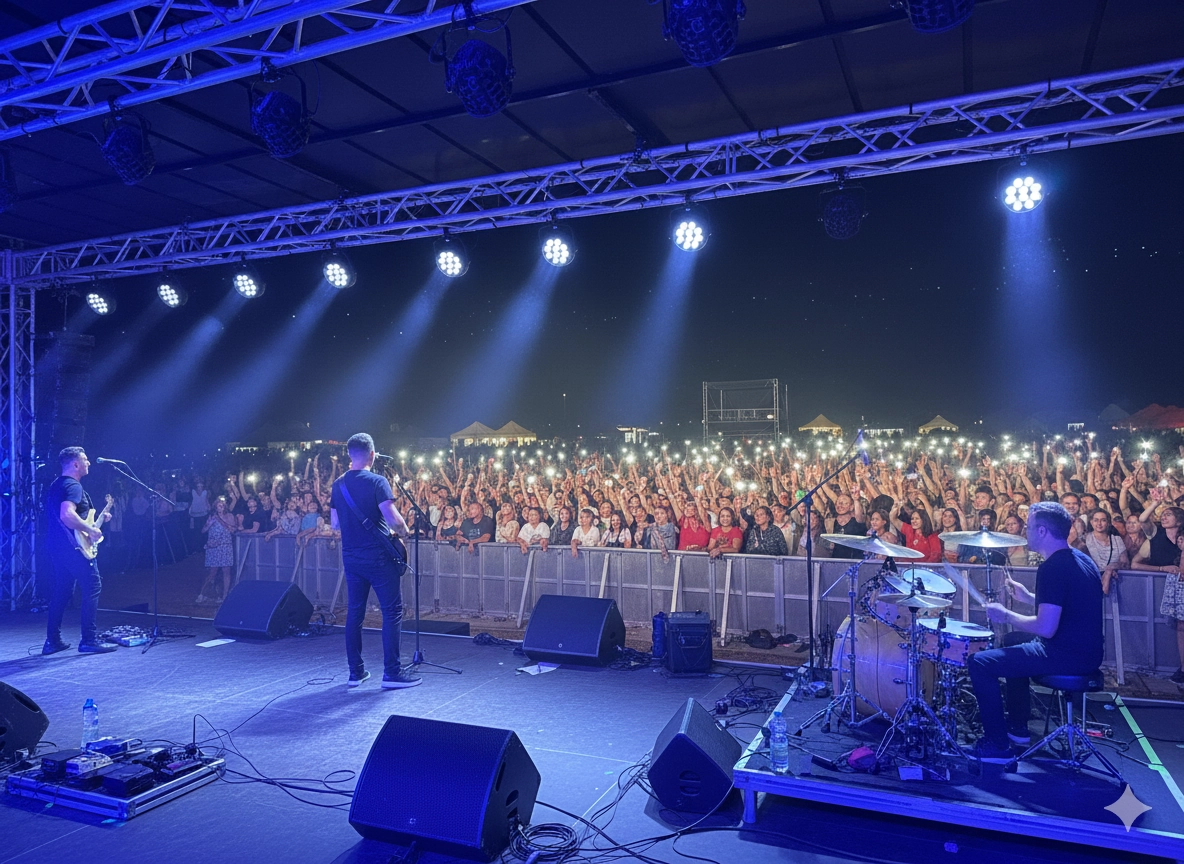The Complete Guide to Setting Up Event Tents and Marquees
Setting up event tents and marquees is a crucial skill for successful outdoor events. Whether you're planning a wedding, corporate event, or festival, proper tent installation ensures guest comfort and safety while protecting against unpredictable weather conditions.
Pre-Setup Planning
Before beginning any tent installation, thorough planning is essential for success.
Site Assessment
- Ground conditions: Check for level surfaces, drainage issues, and underground utilities
- Space requirements: Ensure adequate clearance around the tent perimeter
- Access points: Plan for guest entry/exit and emergency evacuation routes
- Weather considerations: Monitor forecasts and plan for wind, rain, and temperature changes
Equipment Checklist
- Tent components (poles, fabric, stakes, guy ropes)
- Tools (mallets, tape measure, level)
- Safety equipment (hard hats, work gloves, safety vests)
- Ground protection (mats, flooring systems)
Step-by-Step Setup Process
1. Site Preparation
Clear the area of debris, rocks, and any obstacles. Mark underground utilities and ensure the ground is as level as possible. Lay out ground protection if required.
2. Frame Assembly
Start with the main structural components:
- Assemble the frame according to manufacturer specifications
- Ensure all connections are secure and properly aligned
- Check that the structure is square and level
3. Fabric Installation
- Carefully unfold the tent fabric to avoid tears or damage
- Attach the fabric to the frame systematically, working from one end to the other
- Ensure proper tension without over-stretching the material
4. Anchoring and Tensioning
- Install stakes or weights according to wind load requirements
- Adjust guy ropes for proper tension and stability
- Perform final checks on all connection points
Safety Considerations
Safety should always be the top priority during tent installation:
- Wind limits: Never attempt setup in winds exceeding manufacturer specifications
- Team coordination: Ensure clear communication among all team members
- Regular inspections: Check all components for wear, damage, or deterioration
- Emergency procedures: Have plans in place for rapid tent removal if conditions deteriorate
Professional Installation Benefits
While DIY setup is possible for smaller tents, professional installation offers significant advantages:
- Experience: Professional installers understand site-specific challenges
- Safety: Trained teams follow proper safety protocols and procedures
- Insurance: Professional installation typically includes liability coverage
- Efficiency: Experienced crews complete installations quickly and correctly
Weather Protection Strategies
Proper tent setup provides excellent weather protection when done correctly:
Rain Protection
- Ensure proper slope for water runoff
- Install gutters and drainage systems for multi-tent configurations
- Use appropriate ground covering to prevent mud and standing water
Wind Resistance
- Follow manufacturer's wind load specifications
- Use adequate anchoring systems for local wind conditions
- Consider additional bracing for high-wind areas
Temperature Control
- Plan for heating or cooling systems as needed
- Ensure adequate ventilation to prevent condensation
- Consider sidewall options for climate control
Common Setup Mistakes to Avoid
Learn from these frequent installation errors:
- Inadequate anchoring: Using insufficient stakes or weights for conditions
- Poor site selection: Setting up in low-lying areas prone to flooding
- Fabric overtensioning: Stretching fabric too tight, leading to tears or structural stress
- Ignoring weather warnings: Attempting setup during unsafe conditions
- Insufficient clearance: Not allowing enough space around the tent perimeter
Maintenance During Events
Once installed, ongoing maintenance ensures continued safety and functionality:
- Regular inspections: Check guy ropes, stakes, and fabric condition
- Weather monitoring: Adjust setup as conditions change
- Guest safety: Monitor occupancy levels and emergency access
- Documentation: Keep records of setup specifications and any adjustments
Conclusion
Proper tent and marquee setup is fundamental to successful outdoor events. While the process requires careful planning, appropriate equipment, and safety awareness, the result is a weather-protected space that enhances any celebration or gathering.
For complex installations or large events, consider partnering with professional event management companies who bring expertise, proper equipment, and insurance coverage to ensure your event's success.
Need professional tent and marquee installation for your next event? Contact Cymba Unified for expert setup services and comprehensive event management solutions.
